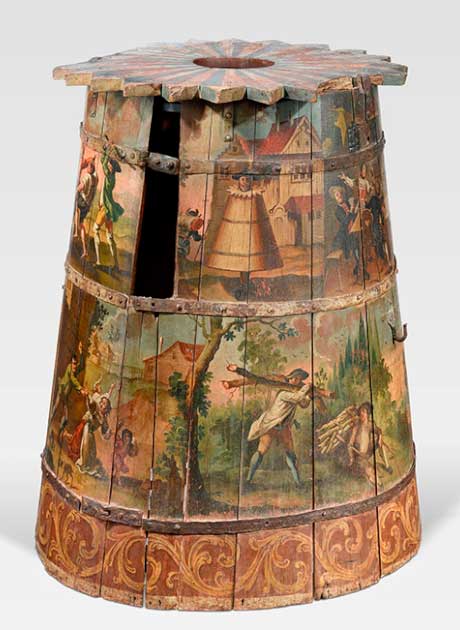Wearing the Drunkard’s Cloak Was the Worst Hangover in History
After a night of drinking, few things are worse than a heinous hangover. Or so I thought! For during the early modern era, heavy drinkers were faced with a far worse punishment. Those guilty of public intoxication were flagrantly humiliated and forced to wear what came to be known as the drunkard’s cloak.
The drunkard’s cloak was an empty beer barrel whose top and sides had been cut to form a hole for the head and arms of the wrongdoer. The culprit would then be placed inside to be paraded and pilloried around the streets as an object of community ridicule. The objective was clearly to generate shame, as humans are continually creative when it comes to creating curiously cruel forms of torture and punishment for those straying outside the realms of the socially acceptable.
Several sources claim that the drunkard’s cloak was a common punishment in medieval England. Heavy drinking, and the disorderly conduct that went with it, was first made illegal when English government passed the Ale Houses Act of 1551. Since the law did not manage to keep drinkers in check, several sources claim that the drunkard’s cloak became a popular corporal punishment for repeat offenders. Britannica claimed that it was also employed on “promiscuous women.”
In some references, the drunkard’s cloak is imagined as a common form of punishment during the puritanical rule of Oliver Cromwell, Lord Protector between 1653 to 1658. Cromwell has been remembered for his failed attempts to curb any form of frivolous fun, from sports, games, entertainment, dancing and, of course, drinking, instead encouraging fasting and prayer.
Across Europe, the drunkard’s cloak was known by several names between the 17th and 18th century, including the Schandmantel (German for “coat of shame”). The Bayerisches Nationalmuseum has one painted example on display which includes painted illustrations of the wrongdoer’s antics, including poaching and prostitution.

A painted Schandmantel, or coat of shame. (Bayerisches National Museum / CC BY-NC-ND 4.0)
Meanwhile, in Denmark the same punitive device was known as the Spanish mantle. Adulterous women were punished by being forced to wear a drunkard’s cloak in 1640s Delft in the Netherlands, while Samuel Pepys reported a similar contraption in The Hague in 1660.
Back in England, “alcohol has always been an important part of Northumbrian culture – for better or worse,” explained historian Dan Jackson in History Extra. It therefore seems fitting that, in his 2009 Bygone Punishments, author William Andrews disclosed that the only archival evidence of the drunkard’s cloak in England dates back to 1650s Newcastle upon Tyne, where it was described in Ralph Gardiner's England's Grievance Discovered, and therefore dubbed the Newcastle cloak.
The prevalence of the drunkard’s cloak in popular imagination outside of Newcastle is a prime example of indifference to historic fact. Meanwhile, the continued use of shame-based approaches to treat alcoholism, despite evidence on the way shame triggers addiction, highlights the ever-important need for fact-based action.
Top image: The drunkard's cloak on display at the Torture Museum in Bruges. Source: Dimitris Kamaras / CC BY 2.0
By Cecilia Bogaard



















